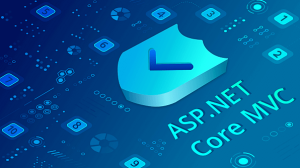
The Model-View-Controller (MVC) architecture is a popular design pattern in software development, offering separation of concerns and scalability. When implementing MVC in Linux applications, it’s essential to adapt the core principles to the specific needs of Linux environments. Enrolling in MVC training in Chennai can provide valuable insights for those looking to master this pattern. This guide explores how to effectively apply MVC in Linux applications, focusing on its relevance to Java development.
Understanding MVC Architecture
The MVC architecture divides an application into three interconnected components: Model, View, and Controller. This pattern is widely used because it organises code to promote scalability and easy maintenance. It is essential when developing applications for Linux environments, as these often involve multi-threading, data access, and integration with other tools.
MVC Design Pattern
Implementing MVC in Java requires understanding how Java technologies like servlets, JSPs, and Spring adhere to the MVC design pattern. The Model handles data and business logic, the View serves as the user interface, and the Controller manages input and updates the model and view.
Java applications run on Linux via the JVM, allowing MVC principles to be applied. Libraries and frameworks like Spring MVC strongly support MVC in web applications.
Benefits of MVC Architecture for Linux Applications
The MVC architecture benefits Linux applications by separating concerns: the Model manages data, the View presents information, and the Controller links both. This structure allows for easy modification of components. With Linux’s efficient memory and process management, MVC ensures scalability and flexibility in multi-user, multi-process environments, making it ideal for large-scale operations. Developers can enhance their understanding of this architecture through Linux Online Courses, further boosting their ability to build efficient applications.
Handling User Input with MVC on Linux
In MVC, the Controller manages user input from sources like command-line, graphical, or web interfaces. Effectively managing input is key to implementing the MVC design pattern.
The Controller handles HTTP requests for a web-based Linux application, processes them, and returns responses. Ensure the Controller interacts with the Model to reflect changes based on how the platform processes input.
Choosing the Right MVC Framework for Linux
While implementing MVC on Linux, selecting a framework that aligns with your project’s needs is essential. Several Java-based frameworks support the MVC pattern, such as:
- Spring MVC: One of the most popular frameworks, known for its flexibility, scalability, and extensive support for web-based applications.
- Struts: A well-established framework that follows the MVC design pattern, offering a powerful toolkit for building Java web applications.
- JSF (JavaServer Faces) is another option for web applications. It focuses on simplifying UI development while integrating the MVC model.
When working in a Linux environment, these frameworks can be easily deployed on popular Linux servers, such as Apache Tomcat, Jetty, or WildFly.
Future of MVC in Linux-Based Applications
Microservices architecture and cloud computing are transforming traditional monolithic MVC apps. Frameworks like Spring Boot offer flexibility for MVC in microservices, enabling application scaling across distributed systems. For those seeking to master these technologies, joining the Best Training Institute in Chennai can provide invaluable insights and hands-on experience.
Testing MVC Applications in Linux
Testing is crucial for application functionality. The MVC design pattern simplifies unit testing since components are decoupled, allowing independent testing of the Model, Controller, and View. In Linux, frameworks like JUnit help write unit tests for MVC components, ensuring data processing, presentation, and user input function correctly.
Integrating MVC in Linux Applications
To implement MVC in Linux applications, you must consider various Linux tools that help in application development, such as Apache Tomcat for Java-based web applications or other suitable Java web containers. For Linux systems, it’s essential to ensure that the chosen tools integrate seamlessly with the MVC pattern and provide the necessary services for your model, view, and controller.
Also, Check: What are the Benefits of using MVC in Web Application?
User Interface Design with MVC in Linux Applications
The MVC design pattern presents data to users. A Linux application can use either a Command-Line Interface (CLI) or a Graphical User Interface (GUI). For GUIs, frameworks like JavaFX or Swing implement the View, while Java Server Pages (JSP) or Thymeleaf create dynamic views for web applications, maintaining responsiveness to Model changes.
Performance Monitoring and Tuning for MVC Applications on Linux
Monitoring your MVC application’s performance after deployment on a Linux server is crucial. Use JProfiler, VisualVM, and JConsole to track memory, CPU, thread activity, and garbage collection. Tools like Top help prevent overload. Optimising garbage collection, database queries, and HTTP response times can enhance performance.
Implementing MVC in Linux requires understanding the pattern and using Java frameworks like Spring MVC. Leveraging supportive tools leads to efficient, maintainable applications and Linux Training in Chennai offers a comprehensive learning experience to master MVC in a Linux environment.
Also Check: What are the diverse models in MVC?
